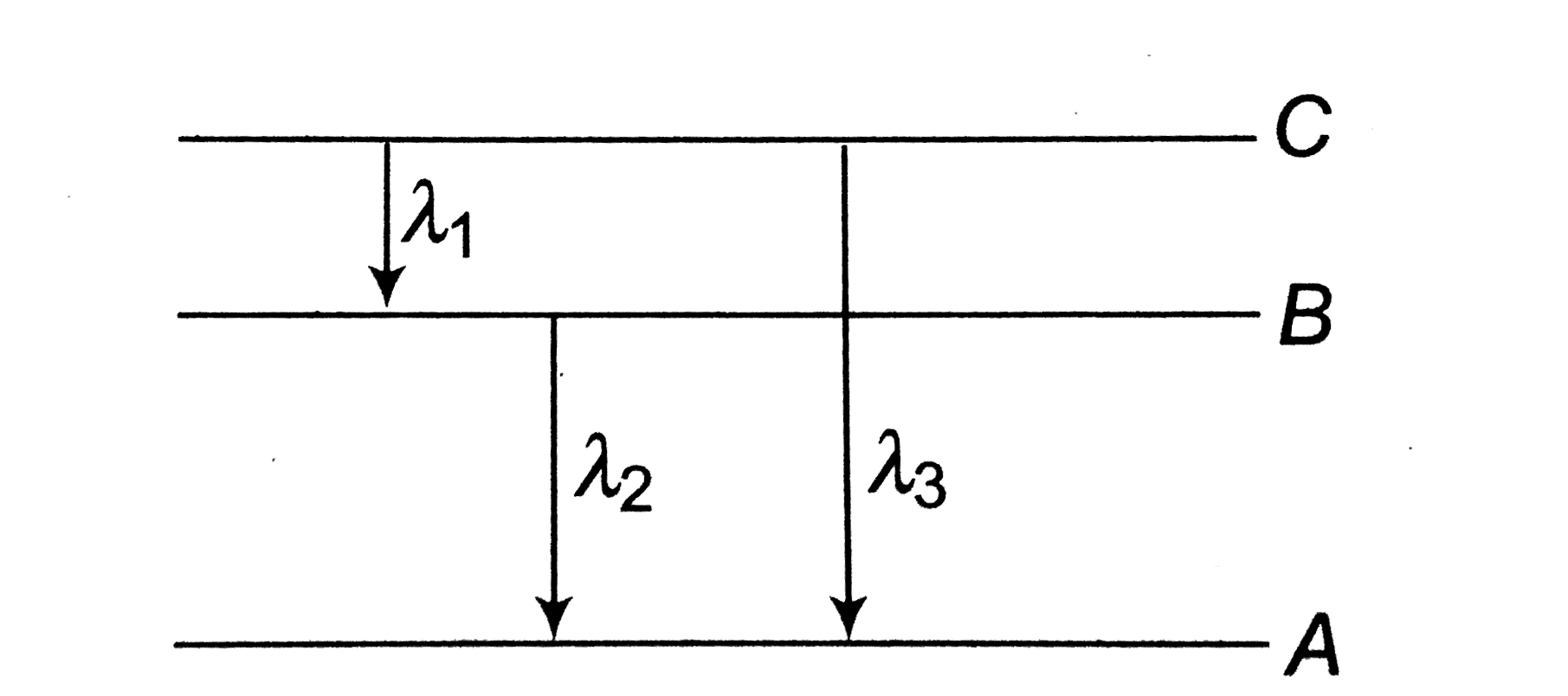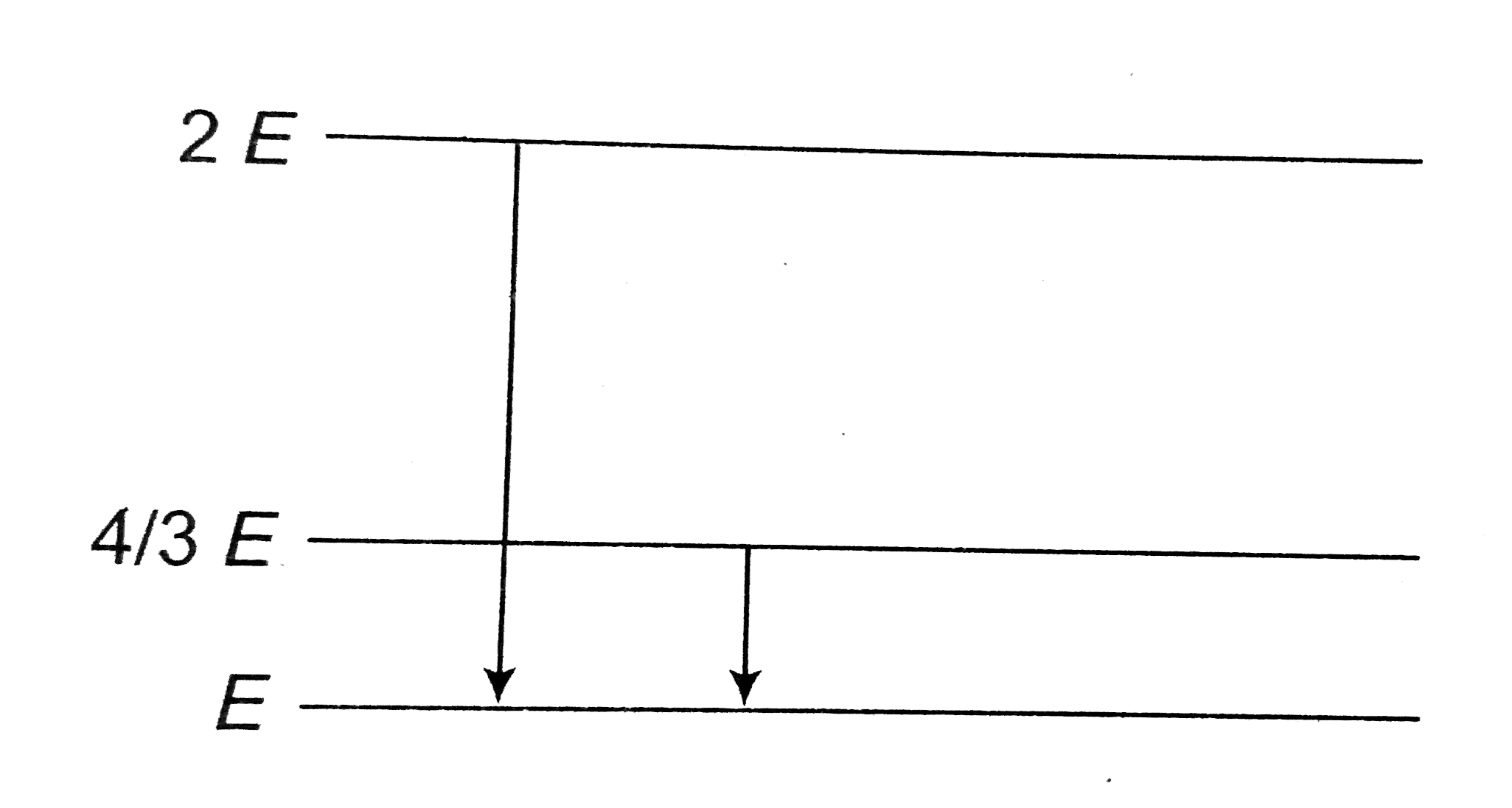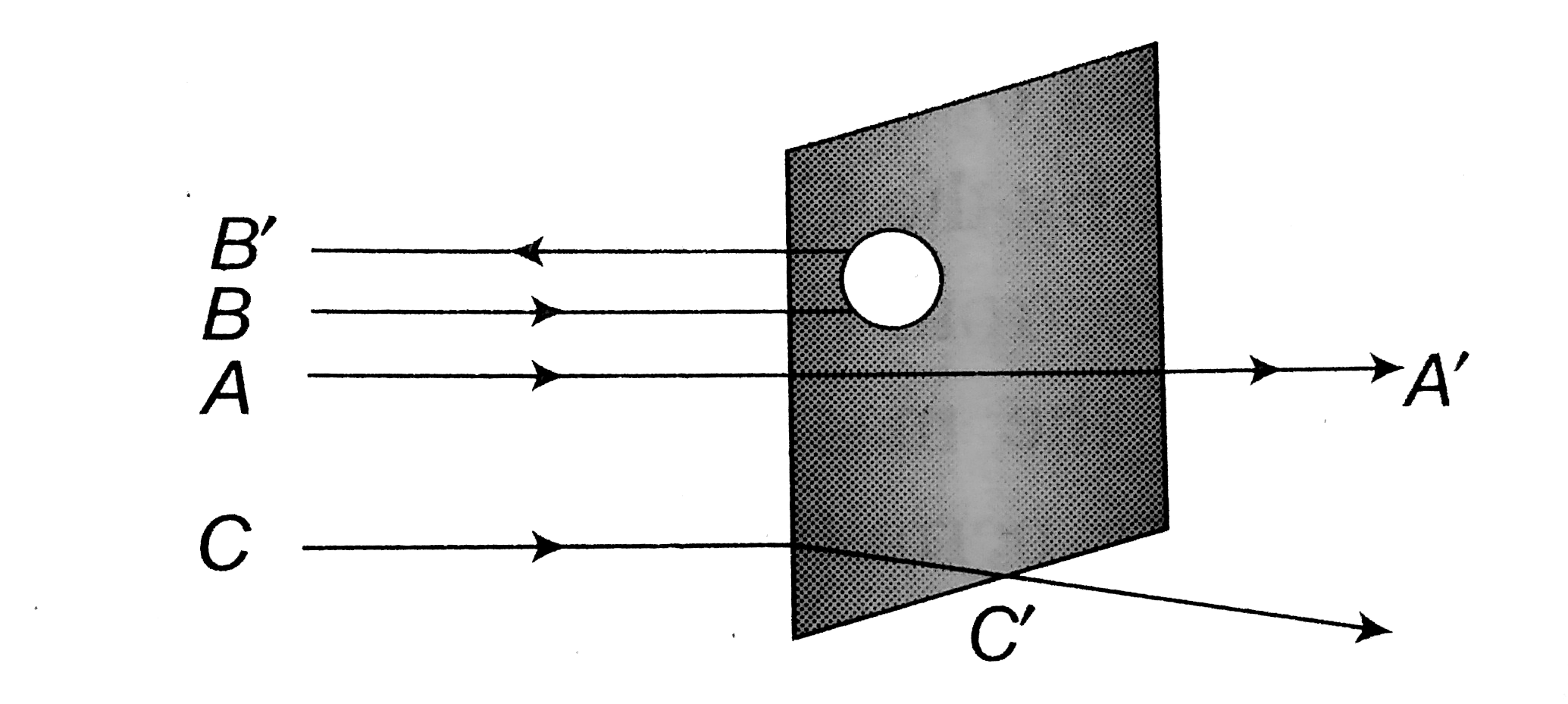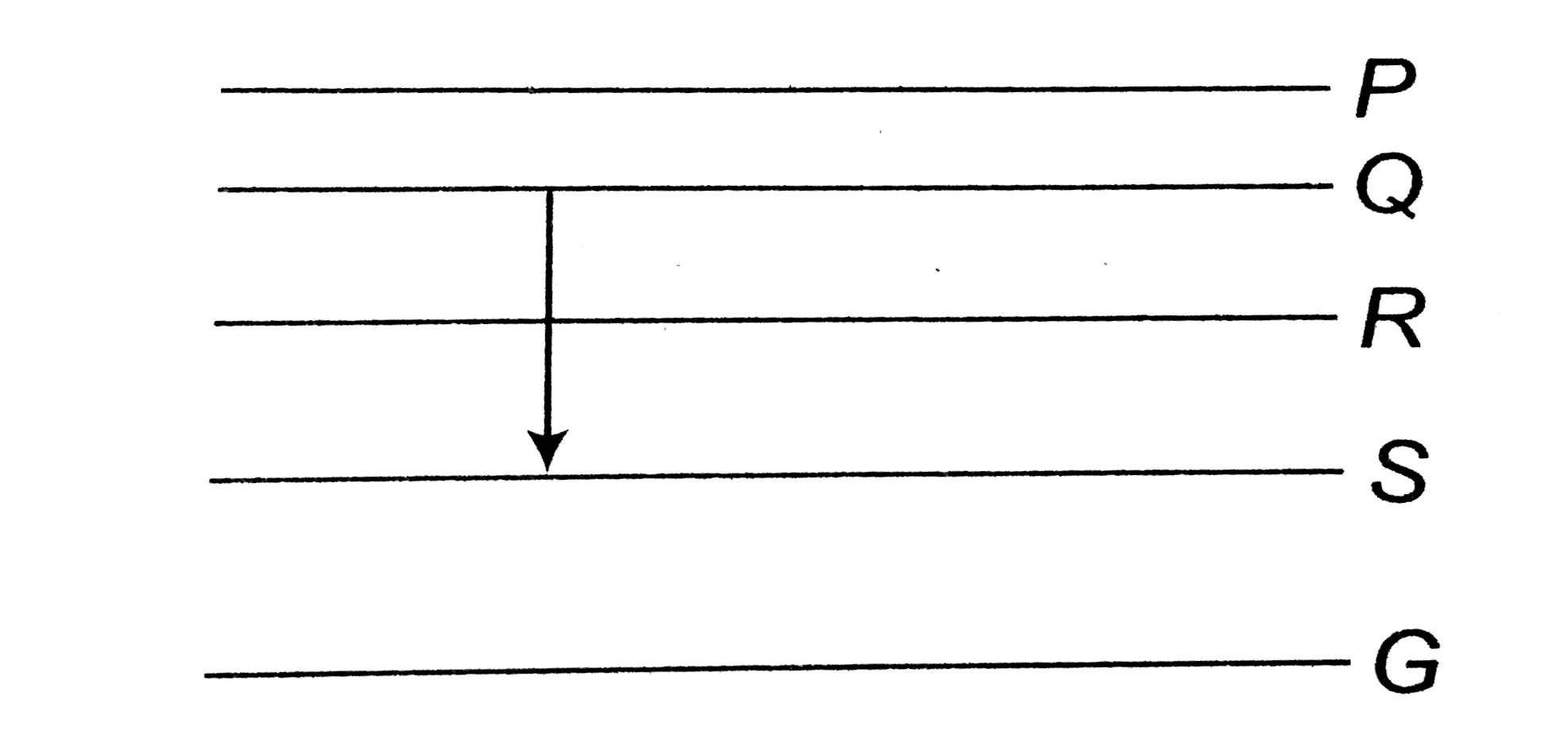Complete Solutions to Exercise of chapter ATOMIC AND NUCLEAR PHYSICS of Class 12 book with complete answers and questions
| Class 12 | PHYSICS |
| Chapter | ATOMIC AND NUCLEAR PHYSICS |
| ERRORLESS | Exercise |
| Number Of Questions | 100 |
| Academic Year | 2023-24 |
If in nature they may not be an element for which the principle quantum number `n gt 4`, then the total possible number of elements will be
01:29View SolutionIn the Bohr's hydrogen atom model, the radius of the stationary orbit is directly proportinal to `(n =` principle quantum number)
01:17View SolutionIn the nth orbit, the energy of an electron `E_(n)= -( 13.6)/(n^(2)) eV` for hydrogen atom. The energy rquired to take the electron from first orbit to second orbit will be
02:20View SolutionIf the following atoms and molecylates for the transition from `n = 2` to `n = 1`, the spectral line of minimum wavelength will be produced by
02:23View SolutionThe Lyman series of hydrogen spectrum lies in the region :
01:55View SolutionThe size of an atom is of the order of
00:56View SolutionWhich one of the series of hydrogen spectrum is in the visible region ?
01:49View SolutionThe energy levels of the hydrogen spectrum is shown in figure. There are some transitions `A, B, C, D` and `E`. Transition `A, B`, and `C` respectively represent
 04:05View Solution
04:05View SolutionIn the figure of previous problem, `D` and `E` respectively represent
02:51View SolutionThe Rutherford `alpha`-particle experiment shown that most of the `alpha`-particles pass through almost unscattered while some are scattered through large angles. What information does it given about the structure of the atom ?
02:34View SolutionWhich of the following is true?
01:50View SolutionThe energy required to knock out the electron in the third orbit of a hydrogen atom is equal to
00:49View SolutionAn electron has a mass of `9.1 xx 10^(-31)kg`. It revolves round the nucleus in a circular orbit of radius `0.529 xx 10^(-10)` metre at a speed of `2.2 xx 10^(6) m//s`. The magnitude of its linear momentum in this motion is
01:24View SolutionIn a beryllium atom, if `a_(0)` be the radius of the first orbit, then the radius of the second orbit will be in general
02:09View SolutionThe ionization potential for second `H`e electron is
01:12View SolutionThe energy required to remove an electron in a hydrogen atom from `n = 10` state is
01:13View SolutionEvery series of hydrogen spectrum has an upper and lower limit in wavelength. The spectral series which has an upper limit of wavelegnth equal to `18752 Å` is
(Rydberg constant `R = 1.097 xx 10^(7)` per metre)02:31View SolutionThe kinetic energy of the electron in an orbit of radius `r` in hydrogen atom is (`e =` electronic charge)
01:29View SolutionIonization potential of hydrogen atom is `13.6 V`. Hydrogen atoms in the ground state are excited by monochromatic radiation of photon energy `12.1 eV`. The spectral lines emitted by hydrogen atoms according to Bohr's theory will be
02:53View SolutionEnergy levels `A, B, C` of a certain atom corresponding to increasing values of energy i.e., `E_(A) lt E_(B) lt E_(C)`. If `lambda_(1), lambda_(2), lambda_(3)` are the wavelengths of radiations corresponding to the transitions `C` to `B, B` to `A` and `C` to `A` respectively, which of the following statements is correct?
 02:30View Solution
02:30View SolutionThe angular momentum of electron in `n^(th)` orbit is given by
01:27View SolutionThe ratio of the energies of the hydrogen atom in its first to second excited state is
01:26View SolutionAn electron jumps from the `4th` orbit to the `2nd` orbit of hydrogen atom. Given the Rydberg's constant `R = 10^(5) cm^(-1)`. The frequency in `Hz` of the emitted radiation will be
02:36View SolutionThe ionisation potential of hydrogen atom is `13.6` volt. The energy required to remove an electron in the `n = 2` state of the hydrogen atom is
01:40View SolutionThe ionisation energy of `10` times innised sodium atom is
01:28View SolutionIf the wavelength of the first line of the Balmer series of hydrogen is `6561 Å`, the wavelngth of the second line of the series should be
03:53View SolutionThe follwing diagram indicates the energy levels of a certain atom when the system moves from `2E` level to `E`, a photon of wavelength `lambda` is emitted. The wavelength of photon produced during its transition from `(4E)/(3)` level to `E` is
 02:37View Solution
02:37View SolutionA beam of fast moving alpha particles were directed towards a thin film of gold. The parts `A', B'` and `C'` of the transmitted and refected beams correcponding ro the incident parts `A, B` and `C` of the beam, are shown in the adjoining diagram. The number of alpha particles in
 04:53View Solution
04:53View SolutionAccording to Bohr's theory the radius of electron in an orbit described by principle quantum number `n` and atomic number `Z` is proportional to
02:32View SolutionThe radius of electron's second stationary orbit in Bohr's atom is `R`. The radius of the third orbit will be
02:19View SolutionIf `m` is mass of electron, `v` its velocity, `r` the radius of stationary circular orbit around a nucleus with charge `Z_(e)`, then from Bohr's first postulate, the kinetic energy `k = (1)/(2)mv^(2)` of the electron in `C.G.S.` system is equal to
01:56View SolutionConsider an eelctron in the nth orbit of a hydrogen atom in the Bohr model. The circumference of the orbit can be expressed in terms of the de Broglie wavelength `lambda` o fthat electron as
02:05View SolutionIn any Bohr orbit of the hydrogen atom, the ratio of kinetic energy to potential eenrgy of the electron is
01:53View SolutionThe spectral series of the hydrogen spectrum that lies in the ultraviolet region is the
02:13View SolutionFigure shows the enegry levels `P, Q, R, S` and `G` of an atom where `G` is the ground state. A red line in the emission spectrum of the atom can be obtaned by an energy level change from `Q` so `S`. A blue line can be obtained by following energy level change
 02:34View Solution
02:34View SolutionA hydrogen atom (ionisation potential `13.6 eV`) makes a transition from third excited state to first excied state. The enegry of the photon emitted in the process is
02:09View SolutionThe figure indicates the enegry level diagram of an atom and the origin of six spectral lines in emission (e.g. line no.`5` series from the transition from level `B` to `A`). The following spectral lines will also occur in the absorption spectrum
 03:30View Solution
03:30View Solutionwhen a hydrogen atom is raised from the ground state to an excited state
02:23View SolutionAn electron makes a transition from orbit `n = 4` to the orbit `n = 2` of a hydrogen atom. The wave number of the emitted radiations `(R =` Rydberg's constant) will be
01:47View SolutionIn Bohr model of the hydrogen atom, the lowest orbit corresponds to
02:15View SolutionThe ratio of kinetic energy to the total energy of an electron in a Bohr orbit of the hydrogen atom, is
03:06View SolutionAn electron in the `n = 1` orbit of hydrogen atom is bound by `13.6 eV`. If a hydrogen atom I sin the `n = 3` state, how much energy is required to ionize it
02:54View SolutionWhich of the following statements about the Bohr model of the hydrogen atom is false ?
05:06View SolutionIf an electron jumps from `1`st orbital to `3`rd orbital, than it will.
02:08View SolutionThe ratio of the frequencies of the long wavelenght limits of Lyman and Balmer series of hydrogen spectrum is
02:20View SolutionWhich of the following transitions in a hydrogen atom emits photon of the highest frequency ?
02:41View SolutionIn terms of Rydberg's constant `R`, the wave number of the first Balman line is
01:48View SolutionIf the ionisation potential of helium atom is `24.6` volt, the energy required to ionise it will be
01:08View SolutionWhich of the transitions in hydrogen atom emits a photon of lowest frequecny `(n =` quantum number)?
03:36View SolutionAccording to Bohr's theory, the expression for the kinetic and potential eenrgy of an electron revolving in an orbit is given respectively by
02:02View SolutionIn the lowest energy level of hydrogen atom, the electron has the angular momentum
02:18View SolutionThe minimum enegry required to excite a hydrogen atom from its ground state is
01:29View SolutionRatio of the wavelength of first line of Lyaman series and first line of Balmer series is
03:01View SolutionThe Rydberg constant `R` for hydrogen is
01:53View SolutionThe wavelength of the first line of Balmer series is `6563 Å`. The Rydbergs constant fro hydrogen is about
02:26View SolutionAccording to Bohr's theory the moment of momentum of an electron revolving in second orbit of hydrogen atom will be
01:17View SolutionThe velocity of an electron in the second orbit of sodium atom (atomic number `= 11`) is `v`. The velocity of an electron in its fifth orbit will be
01:48View SolutionThe absorpotion transitions between the first and the fourth energy states of hydrogen atom are `3`. The emission transitions between these states will be
01:22View SolutionThe ratio of longest wavelength and the shortest wavelength observed in the five spectral series of emission spectrum of hydrogen is
03:05View SolutionIn the Bohr model of a hydrogen atom, the centripetal force is furnished by the Coulomb attraction between the proton and the electrons. If `a_(0)` is the radius of the ground state orbit, `m` is the mass and `e` is the charge on the electron and `e_(0)` is the vacuum permittivity, the speed of the electron is
02:34View SolutionThe electron in a hydrogen atom makes a transition `n_(1) rarr n_(2)`, where `n_(1)` and `n_(2)` are the principle quantum numbers of the two states. Assume the Bohr model to be valid. The time period of the electron in the initial state is eight times that in the final state. the possible values of `n_(1)` and `n_(2)` are
02:14View SolutionAs par Bohr model, the minimum energy (in `eV`) required to remove an electron from the ground state of doubly ionized `Li` atom `(Z = 3)` is
02:24View SolutionIn Bohr's model of hydrogen atom, let `PE` represents potential energy and `TE` the total energy. In going to a higher level
03:16View SolutionAccording to Bohr's model, the radius of the second orbit of helium atom is
01:07View SolutionThe fact that photons carry energy was established by
01:19View SolutionAn ionic atom equivalent to hydrogen atom has wavelength equal to `1//4` of the wavelengths of hydrogen lines. The ion will be
01:59View SolutionThe extreme wavelength of Paschen series are
02:19View SolutionThe third line of Balmer series of an ion equivalent to hydrogen atom has wavelength of `108.5mm`. The ground state energy of an electron of this ion will e
03:54View SolutionAn electron in the `n = 1` orbit of hydrogen atom is bound by `13.6 eV`energy is required to ionize it is
01:32View SolutionIonization energy of hydrogen is `13.6 eV`. If `h = 6.6 xx 10^(-34) J-s`, the value of `R` will of the order of
01:52View SolutionTo explain his theory, Bohr used
02:29View SolutionThe ionisation energy of hydrogen atom is `13.6 eV`. Following Bohr's theory, the energy corresponding to a transition between the `3`rd and the `4`th orbit is
02:23View SolutionHydrogen atoms are excited from ground state of the principle quantum number `4`. Then the number of spectral lines observed will be
01:01View SolutionHydrogen atom emits blue light when it changes from `n = 4` energy level to the `n = 2` level. Which colour of light would te atom emit when it changes from the `n = 5` level to the `n = 2` level ?
01:56View SolutionIn Rutherford scattering experiment, what will b ethe correct angle for `alpha` scattering for an impact parameter `b = 0` ?
01:16View SolutionThe radius of hydrogen atom in its ground state is `5.3 xx 10^(-11)m`. After collision with an electron it is found to have a radius of `21.2 xx 10^(-11)m`. What is the principle quantum number of `n` of the final state of the atom ?
01:42View SolutionThe splitting of line into groups under the effect of magnetic field is called
01:53View SolutionThe energy of a hydrogen atom in its ground state is `-13.6 eV`. The energy of the level corresponding to the quantum number `n = 2` (first excited state) in the hydrogen atom is
01:46View SolutionThe first line of Balmer series has wvaelength `6563 Å`. What will be the wavelength of the ifrst member of Lyman series?
03:37View SolutionThe wavelength of Lyman series is
02:11View SolutionWhen hydrogen atom is in first excited level, its radius is….its ground state radius
01:05View SolutionHydrogen atom excites energy level from fundamental state to `n = 3`. Number of spectrum lines according to Bohr, is
01:38View SolutionNumber of spectral lines in hydrogen atom is
01:23View SolutionIn Bohr's model, if the atomic radius of the first orbit is `r_(0)`, then the radius of the fourth orbit is
01:42View SolutionThe wavelength of the energy emitted when electron come from fourth orbit to second orbit in hydrogen is `20.397 cm`. The wavelength of energy for the same transition in `He^(+)` is
01:52View SolutionMinimum excitation potential of Bohr's first orbit hydrogen atom is
01:51View SolutionWhich of the following statement is true regarding Bohr's model of hydrogen atom ?
(I) Orbiting speed of electrons decreases as if falls to discrete orbits away from the nuclues.
(II) Radii of allowed orbits of electrons are proportional to the principle quantum number.
(III) Frequency with which electrons orbit around the nucleus in discrete orbits is inversely proportional to the principle quantum number.
(IV) Binding froce with which the elctron is bound to the nuclues increases as it shifts to outer orbits.
Selected the correct answer using the codes given below:04:11View SolutionThe wavelength of radiation emitted is `lambda_(0)` when an electron jumps from the third to the second orbit of hydrogen atom. For the electron jump from the fourth to the second orbit of hydrogen atom, the wavelength of radiation emitted will be
03:08View SolutionFor electron moving in `n^(th)` orbit of the atom , the angular velocity is proportional to:
02:14View SolutionThe energy of electron in first excited state of `H`-atom is `-3.4 eV` its kinetic energy is
02:23View SolutionThe energy required to excite an electron from the ground state of hydrogen atom to the first excited state, is
02:50View SolutionWhich of the following phenomena suggests the presence of electron energy levels in atoms
02:07View SolutionWhich of the following spectral series in hydrogen atom give spectral line of `4860 Å`
03:36View SolutionIf scattering particles are `56` for `90^(@)` angle than this will be at `60^(@)` angle
02:24View SolutionWhen an electron in hydrogen atom is excited, from its `4`th to `5`the stationary orbit, the change in angular momentum of electron is (Planck's constant: `h = 6.6 xx 10^(-34) J-s`)
01:54View SolutionEnergy of electron in a orbit of H -atom is
02:53View SolutionIn a hydrogen atom, the distance between the electron and proton is `2.5 xx 10^(-11)m`. The electricl force of attraction between then will be
01:55View SolutionIf `lambda_(max)` is `6563 Å`, then wave length of second line of Balmer series will be
02:08View SolutionWhat will be the angular momentum of an electron, if energy of this electron in `H`-atom is `1.5 eV` (in `J-s`)?
02:02View SolutionThe time of revolution of an electron around a nucleus of charge `Ze` in `n`th Bohr orbit is directly proportional to
01:29View Solution
Exercise questions and complete solutions for chapter ATOMIC AND NUCLEAR PHYSICS of UNIVERSAL BOOK DEPOT 1960 PHYSICS (HINGLISH) of Class 12
